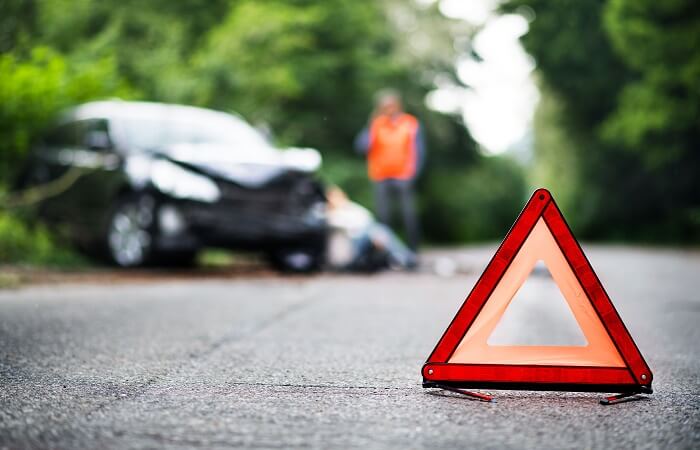Good on paper? What’s (so) wrong with our road-safety laws

When we travel, there are always rules that we must follow.
When we ride the MRT or LRT, there are rules for where you must stand and wait – at the risk of being mowed down by a moving train. When we go to the airport and board an airplane, there are rules for the kind of jokes we can say – as “explosive” humor puts you at risk of spending your vacation in a jail cell, instead of a swanky hotel room.
But somehow, the rules aren’t quite so clear-cut when we ride our bicycle, motorcycle or car out on the road. Many people seem to treat road signs as suggestions and equate road markings to Egyptian hieroglyphics.
Despite seeming like the “law of the jungle” reigns, there is certainly no lack of legislation. Republic Act 4136 or the “Land Transportation and Traffic Code,” which became law in 1964, has comprehensive guidelines on everything from speed of limits to right of way.
And then there’s the innumerable traffic laws that have been passed 60 years hence – legislation on seatbelt use, speed limiters, drunk driving, no-contact apprehension and more. We look into why some of these regulations seem to have minimal impact on road users, but maximum impact on our safety.
Time for a comeback?
The 2018 World Health Organization (WHO) Global Status Report on Road Safety reported that road crashes killed nearly 3,700 people a day and caused up to 50 million injuries worldwide in 2016.
The report also noted that road crashes, which are entirely preventable, place enormous economic burdens on our healthcare system and law-enforcement resources. And perhaps most shockingly, road crashes were found to be the top killer of young people aged 5 to 29 around the world.
Republic Act 11229 or the “Child Safety in Motor Vehicles Act” aims to help tackle this problem by mandating the use of child restraints for children who are under 150 centimeters tall. It also prohibits passengers under 13 years old from sitting in the front seat of a private vehicle.
The WHO said child restraints, which can be mounted using the vehicle’s seatbelt or with special anchors, reduces the chance of death by at least 60 percent. And for children aged 8 to 12, a booster seat can reduce the risk of injury by 19 percent.
However, then-President Rodrigo Duterte suspended the implementation of the law in February 2021 to help ease the financial burden on Filipinos following the havoc caused by the COVID-19 pandemic. Since then, the law has not been reimplemented fully.
Nonetheless, lawyer Sophia San Luis of public-advocacy group ImagineLaw said work has still continued with the Land Transportation Office (LTO) in helping the public eventually adopt R.A. 11229.
“Since implementation was suspended, the LTO and ImagineLaw worked together in training enforcers on best practice speed enforcement, and in establishing fitting stations within LTO that would assist parents in properly installing car seats in their vehicle,” she said.
Motoring lawyer Robby Consunji, who also sits on the board of the Automobile Association of the Philippines (AAP), likened R.A. 11229 to an “instant noodle act” that had no consideration for the right seasoning or ingredients.
“When the LTO realized it was not easy to implement, it went downhill,” he said. “You don’t have viability checks in terms of application and enforceability, you don’t have the staffing to enforce, you don’t have the information campaign.”
Fashionable, not feasible
Meanwhile, Republic Act 10913 or the “Anti-Distracted Driving Act” (ADDA) also has a noble purpose – preventing road crashes caused by people who are using electronic devices while driving.
The WHO said telephone use, even with hands-free devices, means you’re four times more likely to get into a crash, while texting means you’re 23 times more likely to get into trouble. Driver reaction times are also halved when they’re on the phone, which means precious milliseconds taken away from stopping a deadly catastrophe.
As such, R.A. 10913 prohibits the use of electronic devices in all vehicles, whether stopped in traffic or on the move. However, it allows the use of hands-free devices like microphones and earphones, provided that the connected electronic device is outside the driver’s line of sight.
But the reality is that many drivers, including those from Transportation Network Vehicle Services (TNVS), are constantly fiddling with their smartphones to find alternate routes, accept new fares and even watch movies.
San Luis said this is because of inconsistent enforcement, made worse by the suspension of the government’s controversial no-contact apprehension policy.
“The policy does not have the intended deterrent effect, because the public does not feel that the risk of violation is greater than the inconvenience of compliance,” she said. “Implementation of nearly all our road safety laws is generally low. This is based on a self-evaluation of the Philippine government in the most recent Global Status Report on Road Safety.”
Consunji said R.A. 10913 was crafted without fully considering the rise of TNVS, noting that some laws are passed because these are fashionable or politically beneficial to legislators.
“When the law came into play, the cause-and-effect and the reality on the ground was not calculated or not measured,” he said. “Even after many years, there are no hard numbers of a growing trend.”
A generation to fix
Consunji said this concoction of disjointed legislation and seasonal enforcement has led to the situation we’re in today, which could take an entire generation to resolve.
“If the person from New York, the OFW from Saudi and the Manila native met at the corner of Ayala Avenue and EDSA, how do you think they would react to each other?” he said. “Every time legislation is done or the budget is issued, they need to beef up the information and education campaign and the staffing to enforce.”
“From the AAP, we’re doing our best to conduct our own road-safety campaigns on the ground, especially among children,” he added. “But not everybody gets that in grade school and there’s no driver education in high school.”
Meanwhile, San Luis said the Philippines has successfully passed legislation for major road-safety risk factors like drink driving, helmet use, seatbelt use, child-restraint use and speeding. But more work must be done.
“According to the WHO, the first step really is to focus on speed enforcement as this would help significantly reduce road crash risk,” she said.
“Along with this, there is a need to amend the Anti-Drink Driving Act to enable the use of random sobriety checkpoints in enforcement,” San Luis added. “The national government, specifically LTO, should help align policies at the local level because that’s where enforcement really happens.”
Will we ever find our way out of the jungle?

















